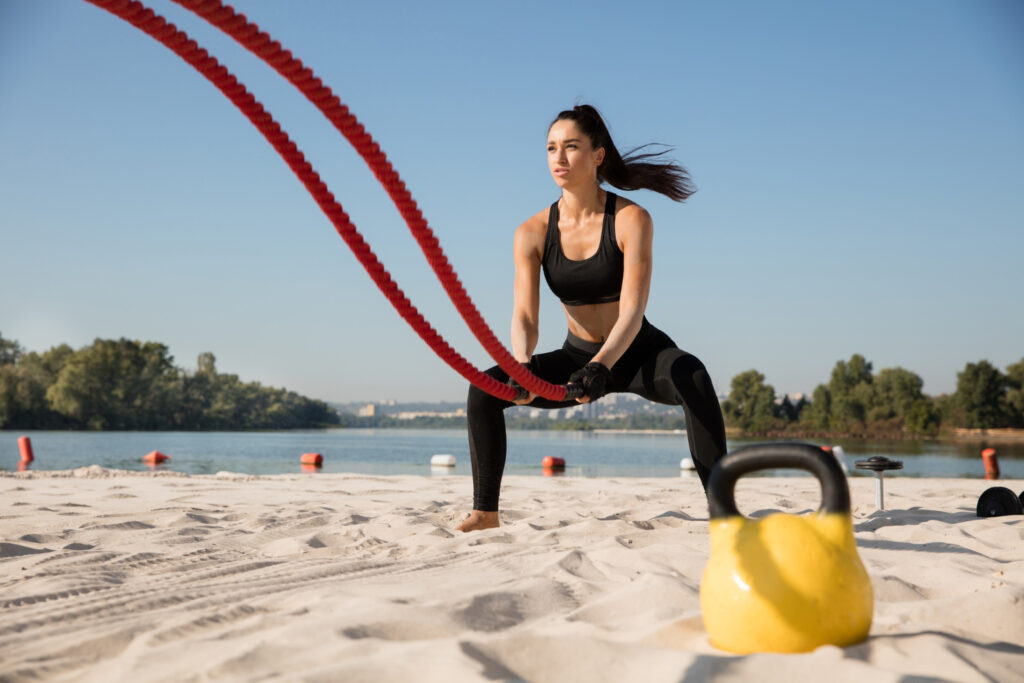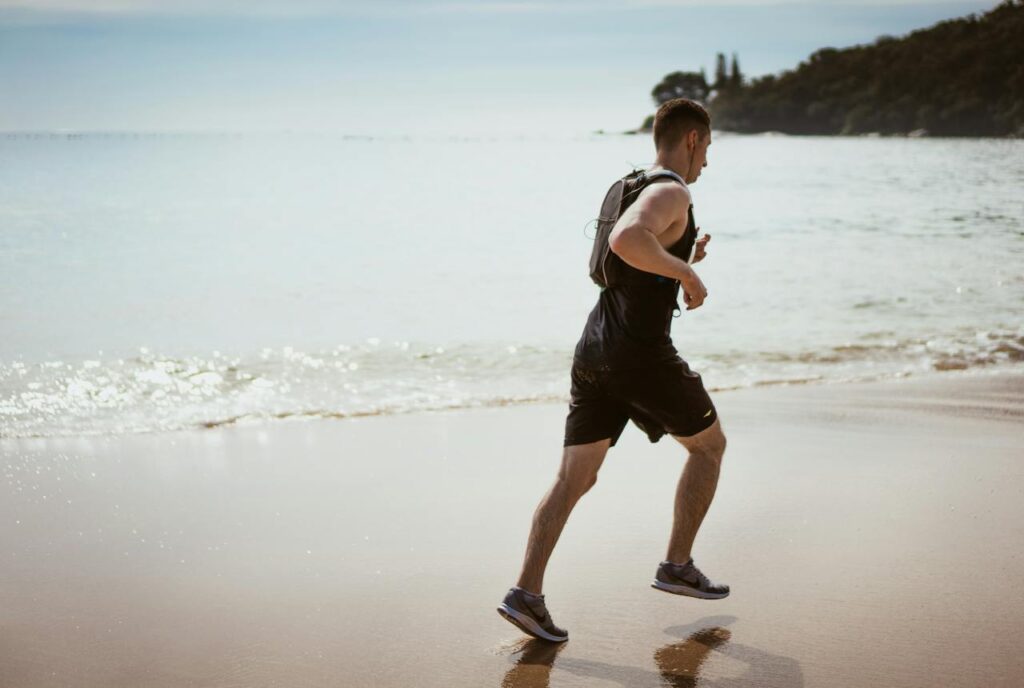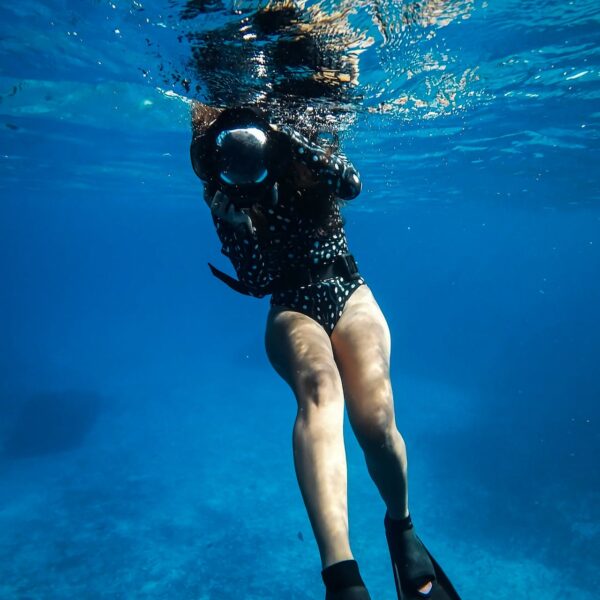Introduction: Beach workouts offer a unique and invigorating way to stay fit while enjoying the natural beauty of the shoreline. The combination of sand and sea breeze creates a dynamic training environment that challenges your body in ways that traditional workouts cannot. In this comprehensive guide, we will explore the various exercise options available on the beach and how they can help you achieve your fitness goals. So grab your towel, put on your sunscreen, and get ready to experience the ultimate beach workout!
Section 1: The Benefits of Beach Workouts
Paragraph 1: Beach workouts go beyond the physical benefits of regular exercise. The sandy terrain adds an element of instability, forcing your muscles to work harder to maintain balance and stability. This engages your core muscles and helps improve your overall strength and coordination.
Paragraph 2: The sea breeze that accompanies beach workouts provides a refreshing and invigorating experience. The cool breeze not only helps regulate body temperature, but it also increases oxygen intake, enhancing your endurance and overall performance.
Paragraph 3: Exercising on the beach also offers mental health benefits. The soothing sound of crashing waves and the serenity of the ocean can help reduce stress levels and promote relaxation. The beach environment provides a tranquil setting that allows you to unwind and escape the pressures of everyday life.

Section 2: Beach Running
Paragraph 1: Beach running is a fantastic way to elevate your cardiovascular fitness. The soft and uneven sand surface engages more muscles in your legs and feet compared to running on a solid surface. This increases the intensity of your workout and helps improve your overall endurance.
Paragraph 2: To get the most out of your beach run, it’s important to choose the right footwear. Opt for lightweight shoes with good traction to navigate the sandy terrain effectively. Additionally, start with shorter distances and gradually increase your mileage to prevent muscle strain or injury.
Paragraph 3: Interval training is highly effective for beach running. Alternate between periods of high-intensity sprints and slower recovery jogs. This type of training not only improves your speed and endurance but also helps burn more calories and fat.

Section 3: Swimming.
Swimming in the ocean provides a full-body workout that targets multiple muscle groups simultaneously. The resistance offered by the water increases the intensity of your movements, helping to build strength and improve cardiovascular fitness.
Before venturing into the open water, make sure you are a confident swimmer and aware of any potential hazards. Always swim in designated areas and be mindful of currents and tides. If you’re new to swimming, consider taking lessons to improve your technique and confidence in the water.
To add variety to your beach swimming routine, incorporate different strokes such as freestyle, backstroke, breaststroke, and butterfly. Each stroke targets different muscles, providing a well-rounded and challenging workout.

Section 4: Beach Volleyball.
Beach volleyball is a fun and social way to stay active on the beach. It combines cardiovascular exercise with strength and agility training. The shifting sand surface adds an extra challenge, requiring quick movements and increased focus.
Gather a group of friends or join a local beach volleyball league to make the most of your beach volleyball experience. Playing with others not only adds a competitive element but also enhances your social interaction and teamwork skills.
Be mindful of your body’s limitations when playing beach volleyball. Warm up before each game, stretch regularly, and listen to your body to avoid overexertion or injury. Remember to stay hydrated and protect yourself from the sun with sunscreen and appropriate clothing.

Section 5: Water Fitness.
Water fitness activities such as aqua aerobics, water jogging, and water yoga provide low-impact yet highly effective workouts. The buoyancy of the water alleviates stress on your joints while still challenging your muscles and cardiovascular system.
Many beach destinations offer water fitness classes led by certified instructors. These classes provide a structured workout that caters to all fitness levels. Joining a class not only ensures proper form and technique but also offers the opportunity to meet like-minded individuals.
When participating in water fitness activities, it’s important to wear appropriate swimwear and footwear. Choose swimwear that allows for freedom of movement and provides support where needed. Water shoes can help protect your feet from rocks or sharp objects in the water.
Section 6: Health and Activity on the Beach.
Engaging in physical activity on the beach offers numerous health benefits. The combination of fresh air, natural sunlight, and physical exertion can boost your mood, increase Vitamin D production, and improve overall well-being.
To make the most of your beach workout, it’s important to stay hydrated. Bring a water bottle and take regular breaks to replenish fluids. Avoid peak sun hours and seek shade when necessary to prevent overheating or sunburn.
Don’t forget to warm up and cool down before and after your beach workout. Gentle stretching and mobility exercises can help prevent muscle soreness and injury. Additionally, wearing appropriate clothing and protective gear such as hats and sunglasses can help shield you from the sun’s harmful rays.

Section 7: Creating a Beach Workout Routine.
Paragraph 1: To create an effective beach workout routine, it’s important to set clear goals and determine the type of exercises that align with those goals. Whether you’re aiming to improve strength, endurance, or flexibility, there are plenty of options available to suit your needs.
Paragraph 2: Consider incorporating a combination of cardiovascular exercises, strength training, and flexibility exercises into your beach workout routine. This will provide a well-rounded and balanced approach to fitness.
Paragraph 3: Don’t be afraid to mix up your routine and try new exercises or activities. The beach offers endless possibilities, from beach yoga and paddleboarding to beach soccer and frisbee. Experimenting with different workouts keeps things exciting and helps prevent workout plateau.
Section 8: Safety Considerations.
Paragraph 1: While beach workouts can be enjoyable and beneficial, it’s essential to prioritize safety. Familiarize yourself with the beach rules and regulations, including any warnings or advisories. Always swim in designated areas and be aware of potential hazards such as strong currents, sharp objects, or marine life.
Paragraph 2: Protect yourself from the sun’s harmful rays by wearing sunscreen with a high SPF, seeking shade whenever possible, and wearing protective clothing such as hats and sunglasses. Stay hydrated by drinking plenty of water throughout your workout and take breaks when needed.
Paragraph 3: Listen to your body and know your limits. Don’t push yourself too hard or engage in activities that are beyond your skill level. If you’re new to a particular exercise, consider seeking guidance from a qualified instructor to ensure proper form and technique.
Section 9: Beach Workout Equipment.
Paragraph 1: Beach workouts require minimal equipment, making them accessible to everyone. However, there are a few essential items that can enhance your workout experience. These include:
- Beach towel or yoga mat for exercises on the sand
- Resistance bands for strength training
- Dumbbells or kettlebells for added resistance
- Beach ball for stability and balance exercises
- Portable speaker for music motivation
Paragraph 2: Investing in high-quality, water-resistant equipment is recommended to ensure durability in the beach environment. Look for products specifically designed for outdoor use and that can withstand exposure to sand and saltwater.
Paragraph 3: Remember to pack your equipment securely and clean it after each use to prevent damage and prolong its lifespan. Rinse off any sand or saltwater and allow it to dry completely before storing.
Section 10: Beach Workouts for All Fitness Levels.
Paragraph 1: Beach workouts can be modified to accommodate all fitness levels, from beginners to advanced athletes. Start with exercises and activities that suit your current fitness level and gradually increase the intensity and duration as you progress.
Paragraph 2: If you’re new to beach workouts or have any underlying health conditions, it’s always wise to consult with a healthcare professional before starting a new exercise routine. They can provide guidance and ensure that you exercise safely and effectively.
Paragraph 3: Remember that consistency is key when it comes to achieving fitness goals. Aim for regular beach workouts, whether it’s a few times a week or every day. The more you commit to your routine, the more progress you will see over time.

Section 11: Conclusion.
Paragraph 1: Beach workouts offer a unique and enjoyable way to improve your fitness and overall well-being. The combination of sand, sea breeze, and the natural beauty of the beach creates an ideal environment for exercise. Whether you choose to run, swim, play beach volleyball, or engage in water fitness activities, the beach offers endless possibilities for staying active and healthy.
Paragraph 2: Embrace the benefits of beach workouts and make them a regular part of your fitness routine. Challenge yourself, have fun, and soak up the positive energy that the beach has to offer. With a little creativity and motivation, you can transform your beach workouts into a powerful tool for achieving your fitness goals.
Paragraph 3: So, the next time you head to the beach, don’t forget to pack your workout gear and seize the opportunity to harness the power of sand and sea breeze for an unforgettable fitness experience. Your body and mind will thank you for it.


